The “Moog” Trivia Quiz
- Moog Minimoog
- Moog Voyager
- Moog Slim Phatty
- Alesis Andromeda
Synthesizers has always been synonymous with innovative sound. Sophisticated machines taken from a spacecraft, that could create any imaginable sound. They could make unique sounds that nobody ever heard before. Today, if you turn on the radio or music television channels you could realize that synthesizers are more common than electric guitars, they hardly make a sound that you never heard before, and that those machines that seemed to come from the future, today are old huge piles of wood and metal full of knobs.
What happens is that the sound of synthesizers are no longer “the future” and became “the present”. They are as accepted as the sound of the guitar, bass or drums, and almost all bands are including synths for that sonic colour that only synths can give. And of all the world’s synthesizers, the Minimoog is perhaps the most famous. It ́s the standard that most analog synthesizers are compared to. No major electronic music band could avoid using a Minimoog (MM) at some point in their careers. It’s just a synthesizer that sounds good in all possible frequency ranges, perfect basses, great leads, nice FXs, percussion, etc.
This new facet of synthesizer finds Moog Music Inc in a superb position, with great products, first-class sound, and a leading name in the industry.
The Moog Voyager (MV) synthesizer, Moog ́s top of the range, is a modern version of the Mini, with similar characteristics in terms of synthesis capabilities. The Slim Phatty (SP) is the rack version of the Little Phatty (LP), a smaller version of the Voyager, with one oscillator and one filter less, and some less modulation options too.
According to Cyril Lance of Moog Music inc., the Phattys use the same oscillators and filters than the Voyager. We’ll see if that appears to be true.
Finally, the Alesis Andromeda (A6) synthesizer is completely different from the previous ones. For a start, it ́s not a real Moog. It is also the only one that is polyphonic, the modulation matrix is far superior to other synths, includes sub oscillators, ring modulators, soft sync, Oberheim filters, step sequencer and several other things that others do not have. But its inclusion in this article is because its oscillators and one of its filters are Moog-circuit based, more precisely Moog Modular circuits (Moog 921 Oscillator and 904 Lowpass Filter).
Oscillators
The first thing that struck me was the difference in timbre of the different instruments, that could be clearly divided into two groups, one with the new Moogs (we’ll call them the “Group A”), and the other with the Minimoog and Andromeda (we ́ll call them “Group B”). The difference is not subtle.
Oscillators in Group A sound noticeably more opaque than the ones of the Group B. It ́s not a question of closed filters, all filters reach inaudible frequencies with the corresponding modulation, it ́s just that the raw waveforms lack brightness.
Group A has a very original selector consisting of a continuous waveform that passes smoothly from triangle to sawtooth, to square and then to a variable pulse. This continuous waveform can be modulated, but unfortunately both synthesizers in Group A have the defect that waveform modulation of all oscillators is shared, and there ́s no way to select which will be affected and which not. That makes their use rather limited.
The MM has fixed waveforms including triangle, triangle/saw, saw, square and two pulses with different widths, since it has no PWM. Oscillator 3 loses one of its waves (the combination tri / saw) for an inverted sawtooth, more useful when used as LFO.
The A6 is the only one with sine wave. It ́s also the only one that can sum all of its waves, and even the square wave has independent and modulatable volume. Both oscillators have sawtooth and its inverted version (turn them on and you get silence!).
All models have exponential FM, on the MM Osc3 can modulate oscillators 1 and 2 at audio rate, any of the 3 MV oscillators can modulate oscillator 2, 3 or all three together. The SP can use oscillator 2 to modulate both oscillators or itself. The A6 is perhaps the most complete of all in this respect, since not only the oscillators can modulate each other independently but the modulation matrix allows a control that the other synths do not have, and also the modulation depth is much greater in the A6 than the rest.
Both the MV and A6 have linear FM, but the MV is just on/off, while in the A6 is variable and its depth is adjustable, and also has a very large range. All but the MM can modulate the pulse width at audio speed, in the case of Group A, with their modulated waveform (tri – saw – pulse), allows sounds that neither the A6 or almost any other synthesizer manages to make.
A curiosity, the SP has phase inverted waveforms in respect with the other synths.
The MM has a noise generator, which is an intermediate between white and pink noise. For modulation, however, noise is red. The MV noise is also somewhere between white and pink noise, but no red noise (for modulation or audio). The SP has no noise generator at all as sound source, but it has a noise generator for modulation. The manual doesn ́t say what noise color it is, or whether it ́s analog or digital, but I suspect it’s the latter. The A6 has white, pink and red analog noise either as audio or modulation.
All synths have hard sync, except the MM. The MV can only synchronize oscillator 2 to 1, but it would have been interesting to also synchronize 3 to 1. The A6 not only has hard sync, but it ́s the only one with soft sync.
The A6 is also the only one with sub-oscillators, one for each VCO, and ring modulator. The oscillator mixer also allows a feedback loop from the output of the filter to its own input.
Perhaps the more stable synthesizer in terms of tuning is the MV. The MM is quite problematic at times, but the fact of having been controlled externally by a MIDI to voltage converter (Kenton Pro-Solo mkII) made it more usable, including modifying the Keytracking in the kenton for an acceptable pitch tuning all throughout the keyboard.
The SP takes around half an hour to fully stabilize (the manual says 15 minutes). It has an automatic tuning system, but it has a flaw … if you don ́t touch a note for a minute, next note will have a small delay. The next will sound right, and so on as long as there is not a one minute or more gap between them. For me this makes it quite unusable, so I choose to use the normal mode and manually tune every so often, with the help of a tuner. The A6 is the one with the most difficult task, as it has to tune no less than 32 VCOs (its pitch and pulse width), 32 VCFs, 16 VCAs. It ́s best to wait 15 to 20 minutes before pressing “auto tune”, but if that is not enough, the A6 has two extra tuning methods, one that tune voices according to ambient temperature (to avoid tuning problems with temperature changes), and another that retune the voices while not in use. Overall the A6 tunes pretty well, but very occasionally you have to repeat the tuning process.
All synths have CV input to control the oscillators, including the A6.
Filters
It is difficult to judge a filter when is not clearly defined what is being filtered. I decided to use both oscillators from my Anyware Instruments Tinysizer as the sound source of all instruments, as they all have audio input directly to the filter. Tinysizer oscillators are glorious, so is an excellent source of sound to judge the filters. I ́m getting into a very subjective field, but here again I find similarities between the MM and the A6, in my opinion they sound almost identical. The MV is quite close, but not equal. Sounds great anyway. The SP filter is the one that sounds different to the rest, it’s like the distortion circuit incorporated in the filter is active even with its value set to 0. I love that filter, it adds another color to my studio, but it is very different from the MM, while still Moog sounding, which is quite strange.
The synthesizers of Group A have the option to be used as 4, 3, 2 or 1 pole. It ́s a very interesting option, and produces very different timbres. The MV HP filter is excellent, quite different to the 2 pole HP filters which we are more accustomed in most monosynths, like Yamaha or Oberheim SEM, even set in 2 pole mode. I’m just not used to hearing a Moog filter in HP mode, and I love it.
Envelopes
Again, the MM is the simplest on this aspect. It has two ADS envelopes, with its release identical to decay or off. The MV and SP have two ADSR, so they allow a little more complexity. Also, the envelopes can be assigned to other destinations beside the filter and VCA, such as pitch or PWM.
Again, the A6 is the most complex of all, with 3 DADDSRR envelopes, with Decay 2 and Release 2 level. Each segment might have one of nine different curves, they ́re are completely modulatable, can be reversed, looped, etc.. This is possible because they are digital. They ́re quite fast, in ULTRA mode they ́re faster that the ones in the other synths, they generate a nice click at the attack. They can also be assigned to any parameter within the synthesizer.
The MV generates a click in the attack that to my taste is not the most pleasant, although for some sounds that aggressive attack is desirable. Not your typical quick high click, in this case is a more serious click. This takes it away from the MM, and the rest of the synths on this article, but we consider it a plus if we take it as part of its personality. It can be heard clearly in the examples where there is only one self oscillating filter as the only sound source, modulated by the envelope. I can say that that click comes from the filter ́s sinewave starting at the cutoff frequency and having to climb up the value to the envelope attack level, slowly enough to be audible.
Furthermore it can be seen that the fastest release time of the volume envelope is sufficiently long to allow the release of the filter envelope to be heard (both at the fastest times), thus the dropping of the filter can be heard. That means the release is very slow, which is not very positive.
LFOs
The MM has no LFO, you must sacrifice an audio oscillator (no3) for that task. The MV, however, includes a dedicated LFO, hence oscillators 3 can be used while still having vibrato. Not the most complex or interesting LFO, but still does its job well. The SP LFO is relatively similar to the MV, but being digital it can be synchronized to MIDI clock, something impossible on the MV. MV ́s LFO can be retriggered by midi clock, but it ́s not the same. The A6 has 3 LFOs and a S&H, LFOs are so complex and so full of features that we recommend you to download the manual and read it.
Modulation
In this aspect, there are big differences. The MM is very limited, although having pitch, filter and VCA CV control inputs, with a good midi to CV converter you can do things like modulate volume with velocity, or even add midi syncable LFOs. The SP is also very limited in modulation, but has some interesting possibilities, like velocity to VCF and VCA, Filter Env to pitch, waveform, etc.
The MV is considerably more complex than the previous two, with two modulation buses plus 4 pot mappings. The buses have a rather complicated implementation, we will not explain it in detail here, but we ́ll just say that we also found some flaws. For example the “shaping” a modulation knob determines the modulation depth of the source to the destination, it has no full control of the depth. We ́ve failed to “shut up” modulation envelope completely with a source like velocity. On top of that, the second attenuation stage is the mod wheel (buss1) or pedal (buss2), which is quite annoying when you want fixed modulation. Sometimes you do not want to have two modulation dimmers! Besides all that, modulation depth is not too … deep.
The Pot Mapping is quite flexible, and consists of assigning a modulation source to a knob. This allows you to modulate envelope segments with velocity, for example, but the sources do not include modulation elements like LFOs, envelopes or oscillators, they`re only limited to “performance” controls as modulation wheels, velocity, etc.
The A6 is the king of the modulation here. Almost all parameters can be modulated by any modulation source. 79 sources can modulate 175 destinations, most simultaneously. In many respects the A6 is even superior to a big modular synthesizer.
Interface
The MM has an easy to understand, clear panel, but in some ways it ́s “modulation mix” or the filter keyboard tracking with two switches may confuse the novice. Anyway, the MM has an exemplary panel. The MV is very similar to the MM, with more knobs because it has more features. But that does not mean it’s easier to use. In fact, I think the interface is one of the main weaknesses of the MV, whose eternal menus makes it very complicated to use when you want to do something that can not be directly made on the panel. Sometimes finding a function may take a while, and that can cause a loss of inspiration, but if you are familiar with the instrument and memorize the menus, you can use it relatively smoothly.
The A6 in this regard suffers the same problem, but their menus are more logical, therefore are easier to use. Beyond the menus, the 72 knobs make programming the A6 a pleasure, and you can practically use it and make thousands of sounds without going into a single menu. The knobs use an internal resolution of 16bit (65536 levels) and are transmitted through midi as CCs or NRPNs.
The SP only has 4 knobs for synthesis, one for each section of the synth (oscillators, filters, envelopes, LFO) which can be assigned to various parameters within the section and thus keep all possible parameters of the synthesizer handy.
The SP has a system that makes the knobs control its analog components directly, the processor records the “analog” movements, and stores them if necessary, but the knobs do not have jumps and steps like most synths with knobs, unless you use it in “precision mode”, in which case the control is digital. The MV has 256 levels for most of it ́s parameters, which is fine, but the less “analog” option of them all.
Conclusion
I will not make a definitive conclusion. I’ll leave that to each reader. I’ll only say that they ́re all great synthesizers, capable of incredible sounds. But there is no doubt that the new Moogs do not sound like the old Minimoog. At times they get close, of course, but to the surprise of many, the A6 is closer to the original sound of the MM than the new Moogs. Is there something wrong with what I’m saying? Not at all, the new Moogs have a new Moog sound. Their sound may not be as rich, but in turn can do a lot of things that the original could not do, and they are new and have less problems in general.
One question that arises is whether the price is really justified with the MV, when the SP costs considerably less. The MV rack version is far more accessible than the keyboard version, so the rack is easier to justify. I think it depends on what you go for, if that ́s bass then definitely it ́s not justified. For lead sounds sometimes the third oscillator allows interesting things or add a profound density to the sound. Both can make interesting effects with FM, S & H, etc. It’s great to have an extra oscillator, an extra filter, and modulation buses, but the SP incorporates things that the MV has not, as an amazing distortion in the filter, syncable LFOs to MIDI, arpeggiator, analogue control knobs, etc..
For sound, I think they both have much in common as I explained above, but the SP is a bit more aggressive. The MV has a more versatile timbre, with its third oscillator, the HP filter, and extra modulation, and considering that its sound is less aggressive, you can guess that it can make extremely subtle sounds.
But, based on the article, the comparison table and especially the demos, the final word is on you.
Special thanks to:
Fernando Boscardini, Virginia Perez Dilsizian, Ernesto Romeo.


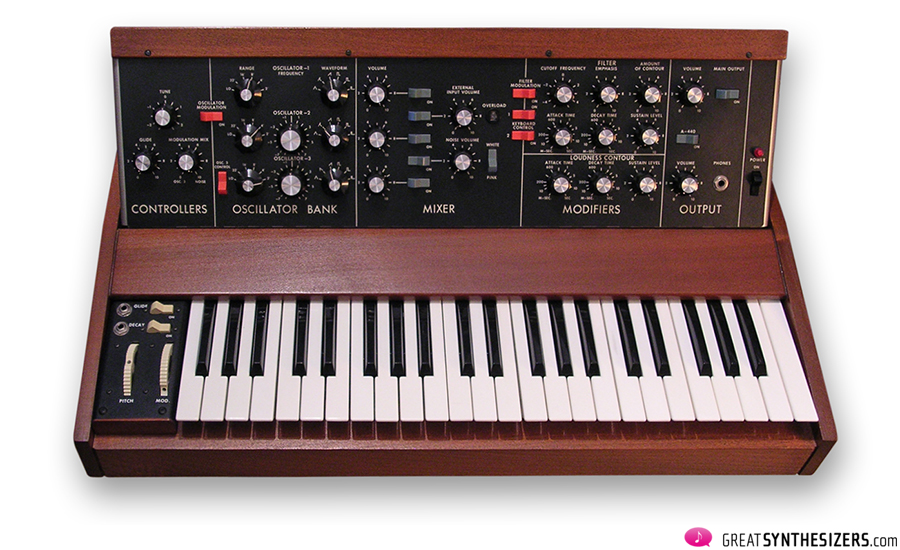
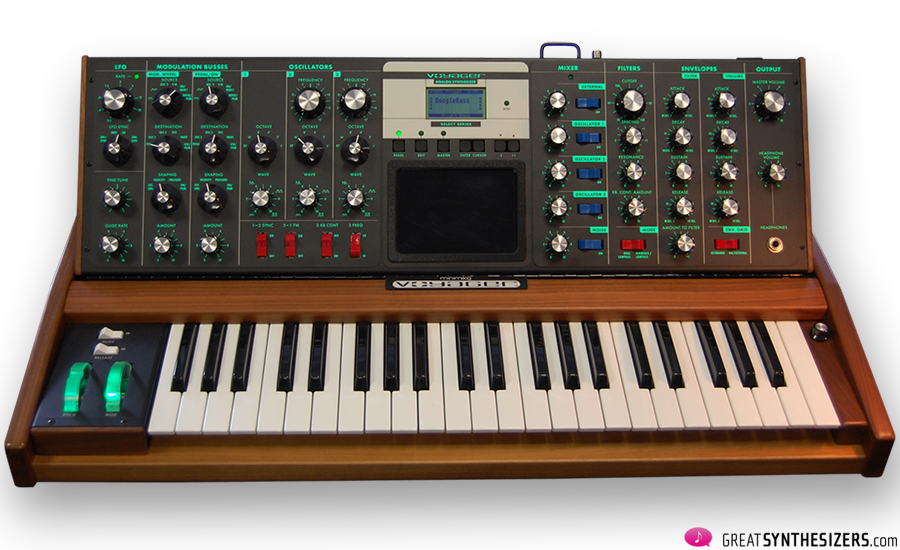
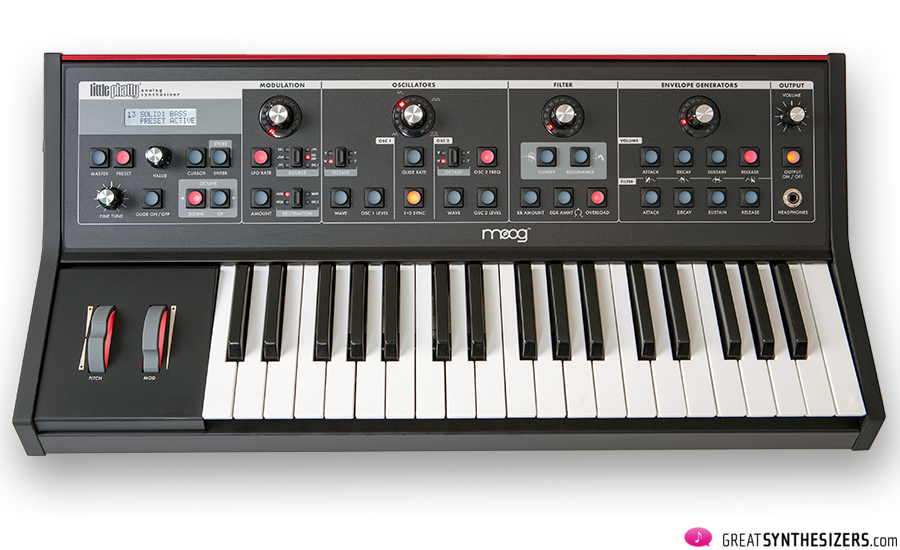
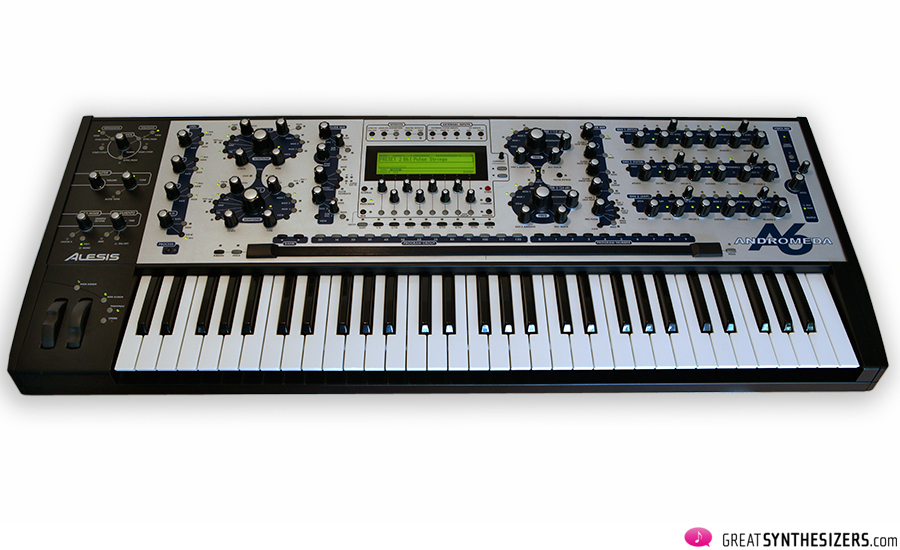
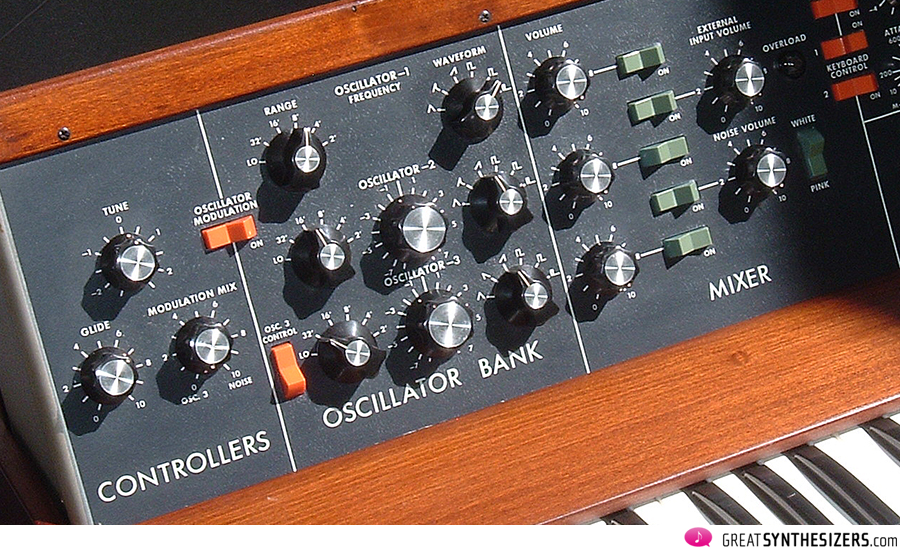
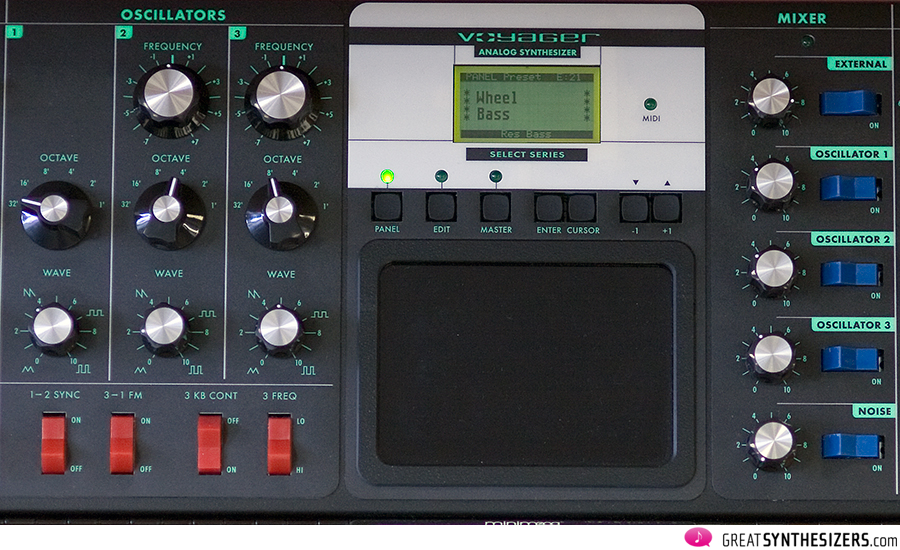
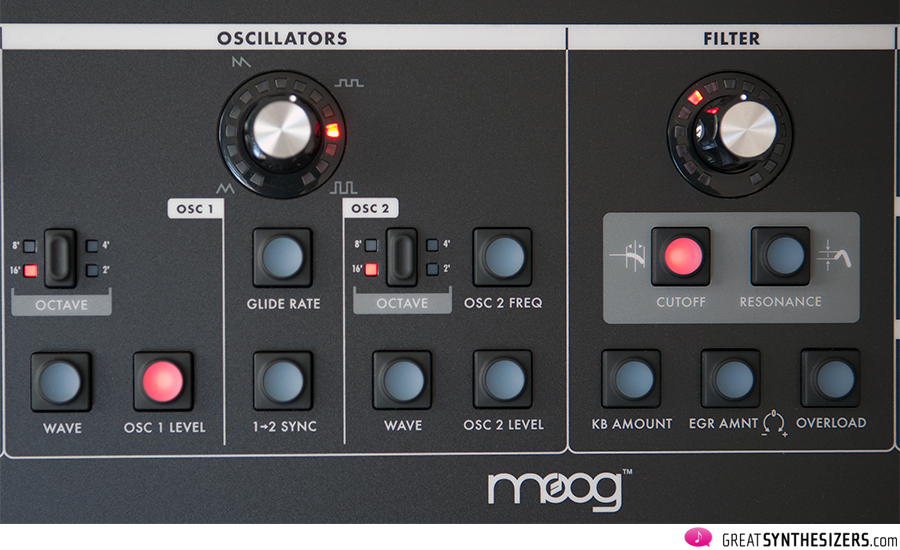

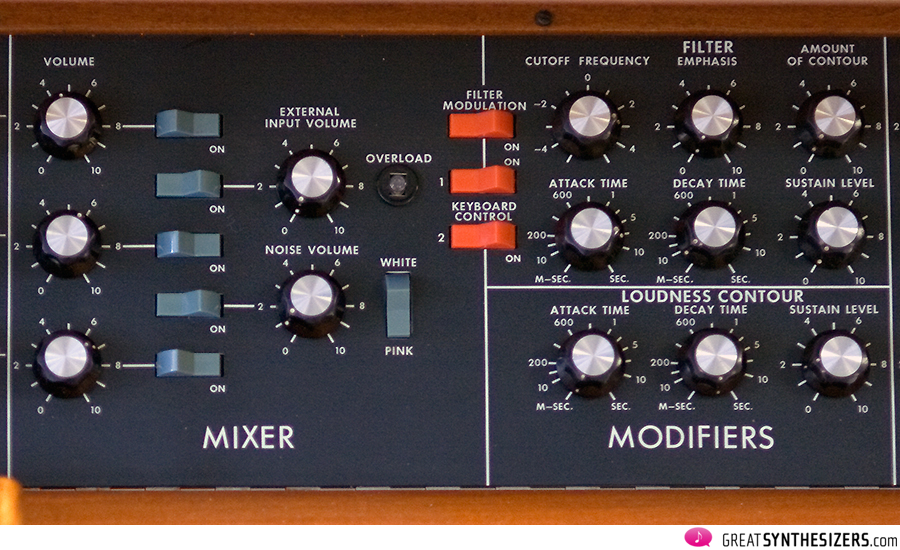
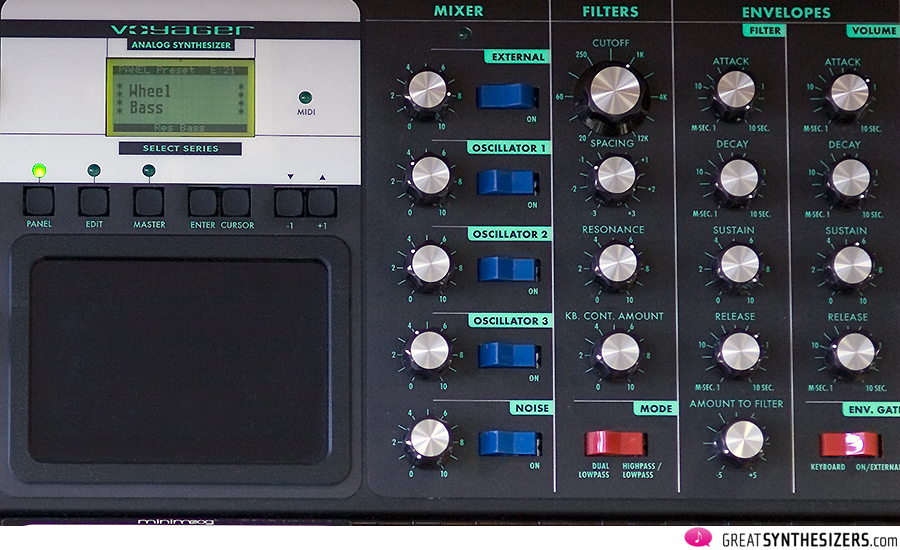
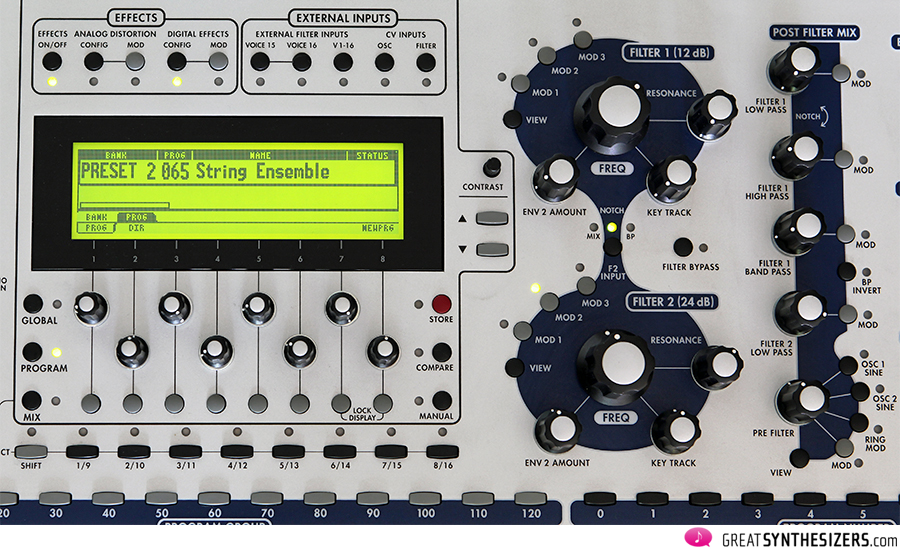
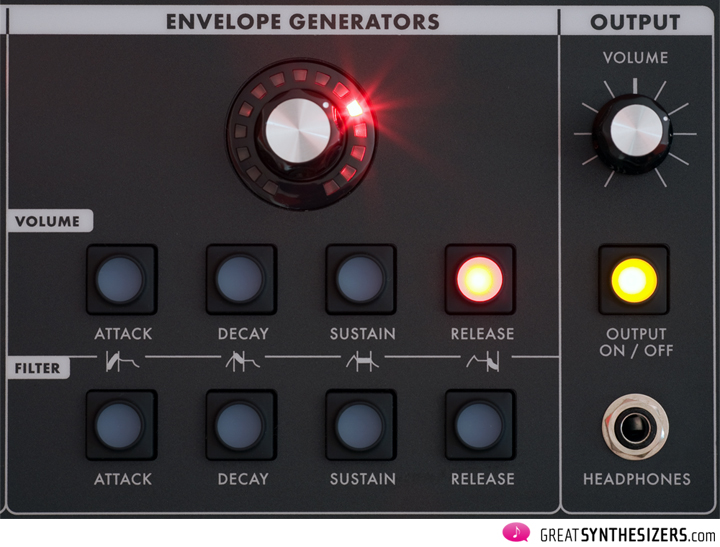
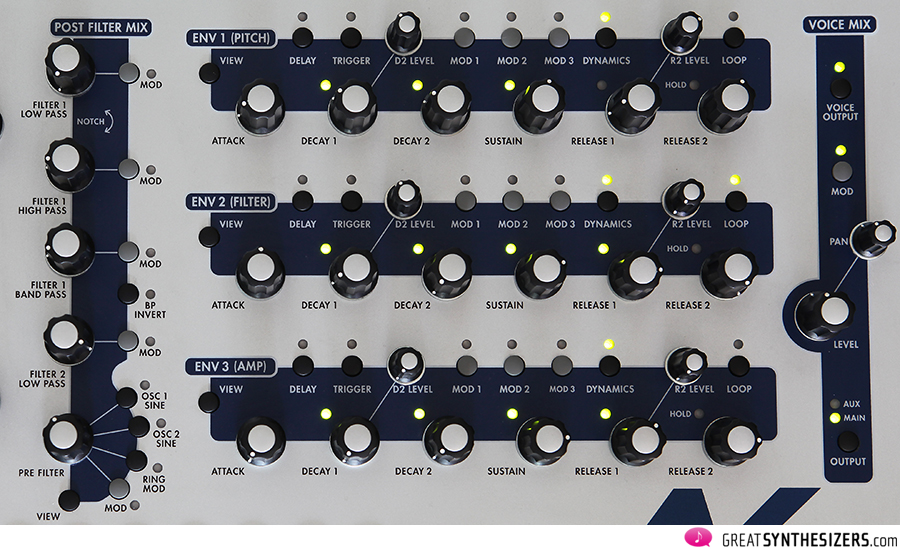
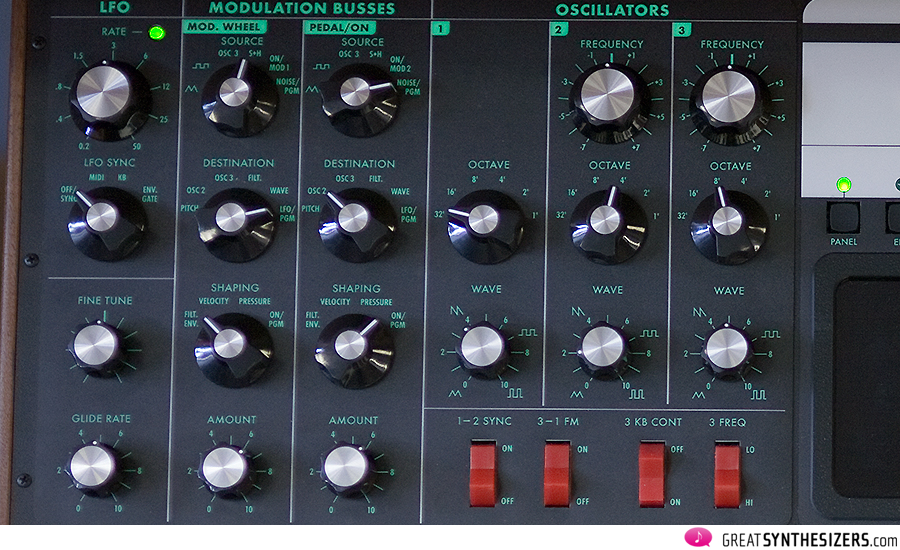
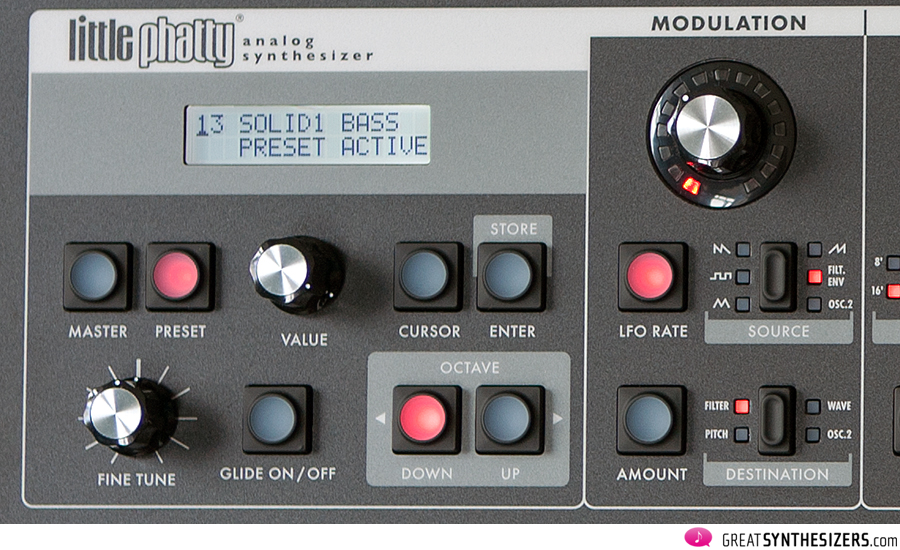
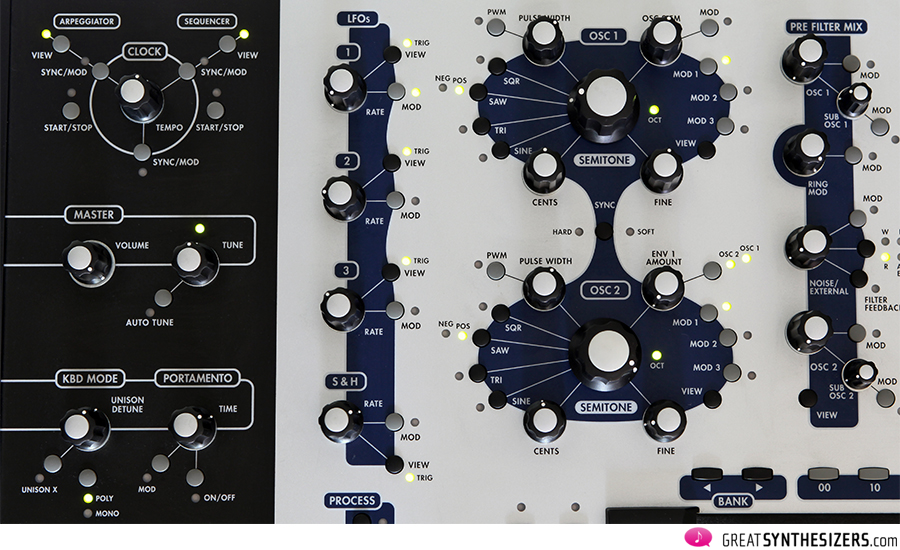

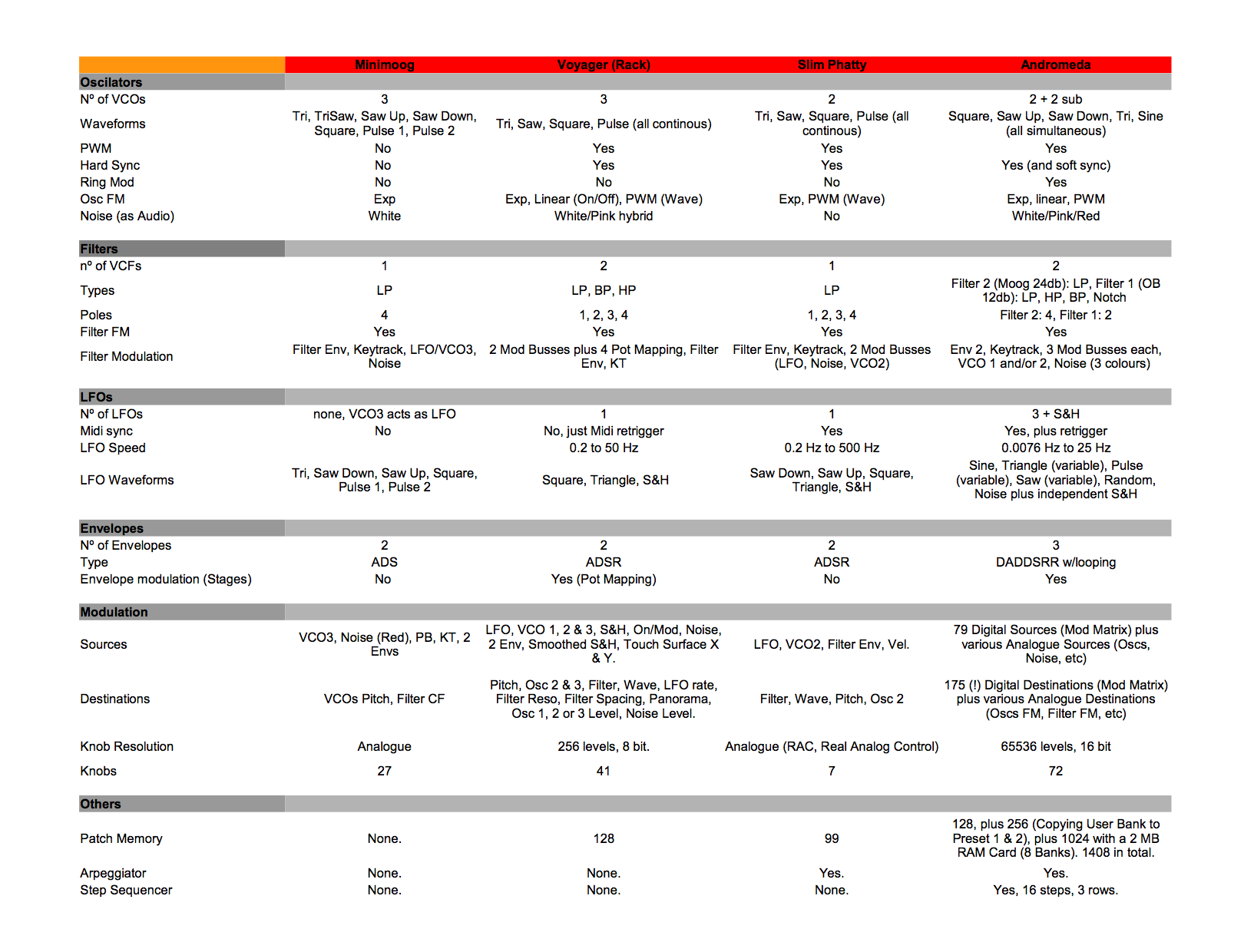
This is indeed a lot to take in, and i got to admit, not having owned a single one of the instruments my guess is as good as the next ones (who haven´t owned one either ;)
A – Andromeda
B – SP
C – MW
D – MM
Keep up the great work :)
Hi Mads,
I owned the Voyager and the Little Phatty. And to tell you the truth, if I did not know which synthesizer is which of the four, I would have been wrong in two cases (at least). It is quite difficult, but most surprising to me was that I could not clearly rule out the Andro.
Btw – Thanks for the kind words. They are appreciated!
Hi !!!
A – Slim Phatty
B – Andromeda
C – Minimoog
D – Voyager
Thanks for the great comparison review! I might be completely off, but having owned 3 of the 4, I would guess the following:
A – Voyager
B – Slim Phatty
C – Andromeda
D – Minimoog
Hi, wow this was hard – i was 100% sure from the beginning, but for every set of files i listened to i was more and more unsure… Well, heres what i belive:
a: Slim
b: Mini
c: Voyager
d: Andromeda
Merry x-mas!
A: Slim
B: Andy
C: Voyager
D: Mini
Not an easy task, and I have only played the Voyager and the Little Phatty for like two minutes, in stores…
My guess is:
A: Voyager
B: Andromeda
C: Slim Phatty
D: Mini
Hi Alexey,
A = Voyager and D is the Slim Phatty. However you got two right and won a GreatSynthesizers.com book!
Please get in touch with either Theo or myself so that we can send you the book.
Congratulations!
Best regards,
Peter
Hi Jan,
C = Minimoog Model D and D = Slim Phatty. However you got two right and won a GreatSynthesizers.com book!
Please get in touch with either Theo or myself so to we can send you the book.
Congratulations!
Best regards,
Peter
Hi,
just found your site – great in depth reviews, pics and sounds!
The old Minimoog D circuits make it stand out on some tracks but the others are so close. I know the cat is out of the bag, but if you have any left, A=Voyager, B=Andromeda, C=Minimoog, D=Slim Phatty
Thanks!
Dear Adam,
thank you for the kind words.
The competition ended already. Please find more details here: http://greatsynthesizers.com/en/news/2013/01/moog-trivia-quiz-the-winners/
Best regards,
Peter
Your articles help me a lot in all mediums of subjects.
http://alesisdm10review.tumblr.com/
Hi, great comparison demo. Is there any way to download these samples?
I can’t afford a real moog and would like to make some bass patches out of these samples for my mpc.
Thanks
… hi Jesse. I asked Javier to contact you … Cheers, Theo
I’m feeling pretty confident I’ve got this down, here goes:
A – Slim Phatty
B – Andromeda
C – MiniMoog
D – Voyager